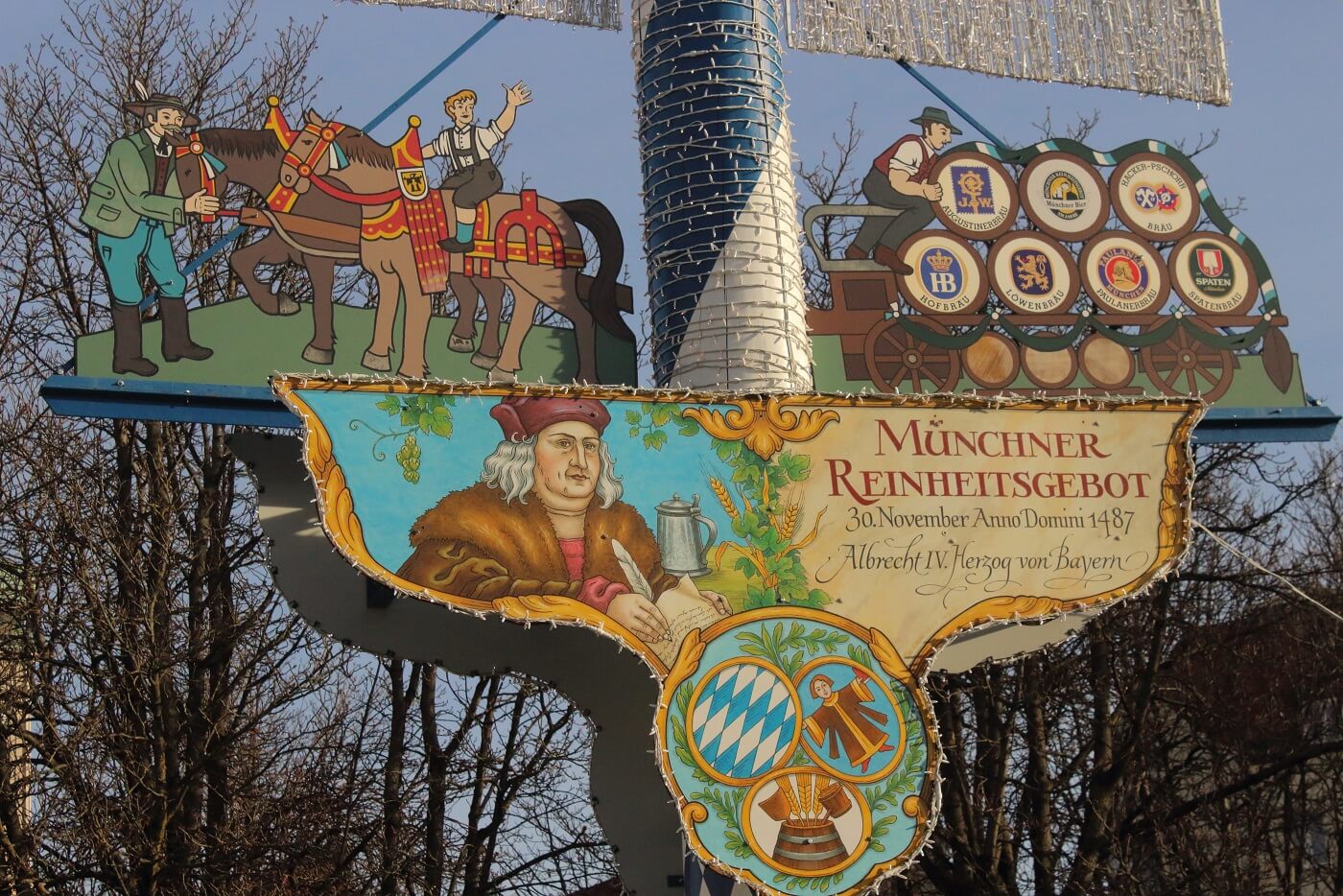
I’ll be true to myself and you from the beginning and recognize that Munich did not fully convince me as a touristic location, even though I have to admit that it is a very liveable city. It has over 100 museums, which means activities for 100 rainy days, two green spots, where you can picnic in the middle of nature, BMW World and two palaces (plus about 20 Christmas markets in December). Museums tickets only cost 1 euro on Sundays, one more reason to culturalize yourself on a rainy Sunday. For the sunny ones, there are dozens of day trips you can do from Munich to the Bavarian Alps, concentration camps, fairytale castles and medieval cities. You can even visit Salzburg in Austria on a day trip. This being said, let’s check what you can do in two days in Munich.
A little bit about Munich

Munich is the capital of Bavaria and the third largest city in Germany. It lies on the River Isar on the outskirts of the Bavarian Alps. The city was first born as a monastery, which turned into a settlement as the Bavarian Duke allowed the monks to have a market at the crossing of the river and the route from Salzburg.
After two world wars, there was no real old town left. It was heavily-bombed in the world wars and passed through a reconstruction plan which made part of its historical architecture shine once again.
Nowadays, the city was voted the best city to live in Germany more than once. Around the world, Munich is best known for its Oktoberfest festival and rich cultural calendar. Tourists visit it for its architecture, green spaces and lively atmosphere, but also because it is close to so many other touristic points.
A free tour of Munich starts daily at 10:45 in Marienplatz. I took it and recommend it. If you need more options, check also this site. In case you miss them, or want more flexibility and time on your own, here’s a list of the top things to do and see.
Top things to do and see in Munich
St. Peter’s Church
There’s no better place to start a tour of Munich than where it all started over a millenium ago. Saint Peter’s Church is the oldest church in town and pre-dates Munich itself. In the 800s a group of monks first settled on St. Peter’s Hill. They built there a modest monastery and a chapel. This is how the city was born and even its name. München/Munich, derives from Mönch, which means monk. The actual building dates back to 1225 and hosts artworks from the Bavarian high baroque, a gold-laced huge altar and the jewel-covered skeleton of Saint Munditia. On the ceiling, there’s a painting illustrating St. Peter crucified upside-down on Vatican Hill. Its tower, Alter Peter, offers the best panorama over the inner city. The ticket costs 1,50€. Take care as the 306 steps are quite narrow.
Marienplatz
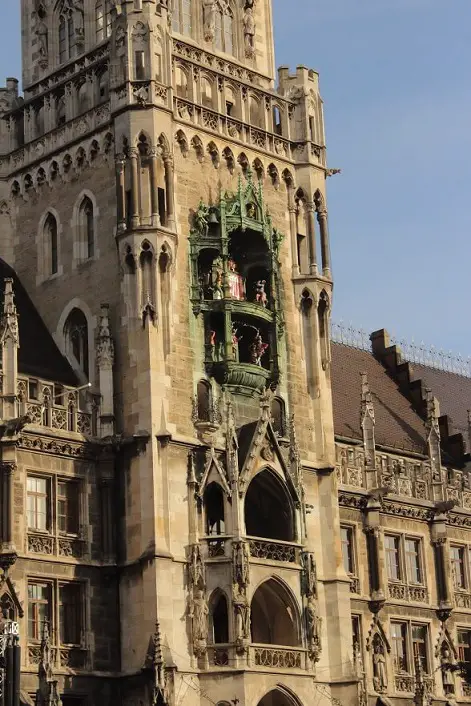
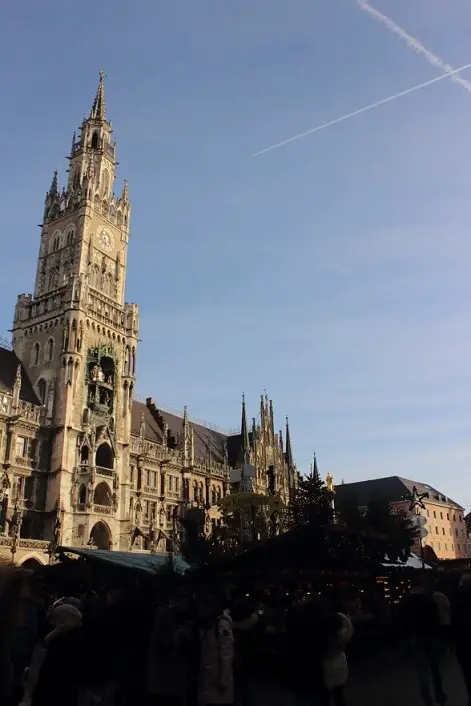
One minute away lies the focal point of the inner city, Marienplatz (Our Lady’s Square) with its cuckoo clock dating back to 1908 (Glockenspiel). It still plays two or three times daily. The show attracts a crowd of people every time. The animated clock features 32 life-sized figures. They reenact episodes from the 1600s for more than 10 minutes, including a duel in the city’s history. If you were disappointed by the old clock in Prague, this is the one for you. You can get a great view from Café Glockenspiel, especially if you get there a few minutes before the Glockenspiel starts.
The clock is set on the gothic tower of the New Townhall. In order to get the best view over the almost 1000 years old square you can climb up the tower of the town hall. On a cloudless day, once can even see the Alps. Walk also into the courtyard of the building to get a different view of this imposing building. In its cellar there’s a traditional restaurant.
The rest of Marienplatz is just as lovely. The statue to which it owes its name, a Marian column still stands there. It was raised in the 17th century to celebrate the withdrawal of the Swedish troops from Munich during the Thirty Years War. On top it has an even older golden statue showing Mary on a crescent moon. Check the site of Marienplatz.
If you come by in December, the Christmas market will be in full swing.
Tip: The Glockenspiel in Marienplatz starts at 11:00 and 12:00, and 17:00 (the last one only from March to October).
Viktualienmarkt
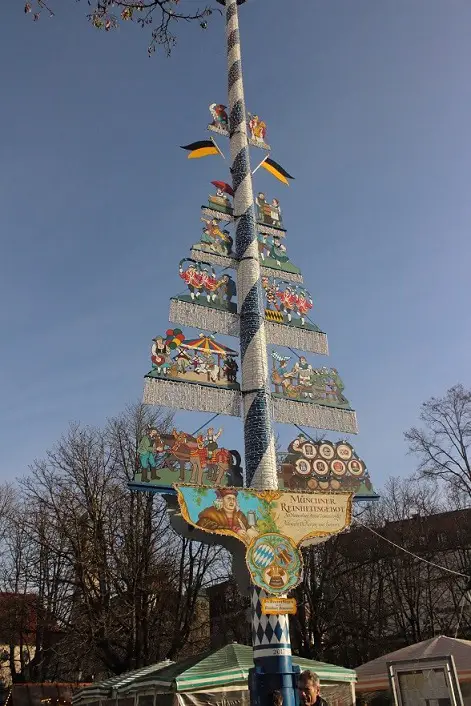
Just 5 minutes away, there’s your first quick snack stop. At the Viktualienmarkt you can sample many regional delicacies as speck, weisswurst, mushrooms, pickles and cheese. Some vendors also sell flowers, coffee, spices and fresh juice.
In the middle of the most famous food market in Munich stands a maypole. This colorful big tree is an important part of the Bavarian culture. Any tiny village, city and even beer gardens have one of those. It is erected on the first of May and the work involved is followed by a party with dance and beer. The traditionally dressed figures and signs on it represent the various crafts and trades practiced locally and are sponsored by local businesses and craftsmen.
The most funny fact about the maypole is that the one that steals it gets as much food and beer as he wants. Rival towns try to steal one another’s maypoles and get rewarded for it. This exact maibaum was stolen in 2017 by a small village. You can read the entire story here. Sometimes even police forces join the game and become thieves.
Sendlinger Tor
Even after the two world wars, parts of the old city wall still survived. One can follow the lines of the old medieval walls and see three of its impressive city gates. The most known one is Sendlinger Tor, or Siegestor, just a short walk away. This is a triumphal three-arched gate commissioned by King Ludwig of Bavaria in 1852. It was raised in honor of the Bavarian army in the Napoleonic wars. It kept its classical columns and carvings. A statue of Bavaria on a lion-drawn carriage tops it.
Frauenkirche
The Cathedral of Our Lady is the largest church in Munich and one of the oldest (15th century). Its pair of towers crowned by onion domes dominate the skyline of the town. In fact, no building inside the city limits is allowed to exceed the 109-metre height of its towers. No wonder it has become an important sight in the town. The design is simple, with unadorned walls and few stained glass windows. It suffered a lot in the WWII. One can also note a tomb monument for Louis IV and a shoe-shaped impression at the entrance, said to be left there by the devil himself. After the end of renovation, one will also be able to climb one of its towers.
Odeonsplatz
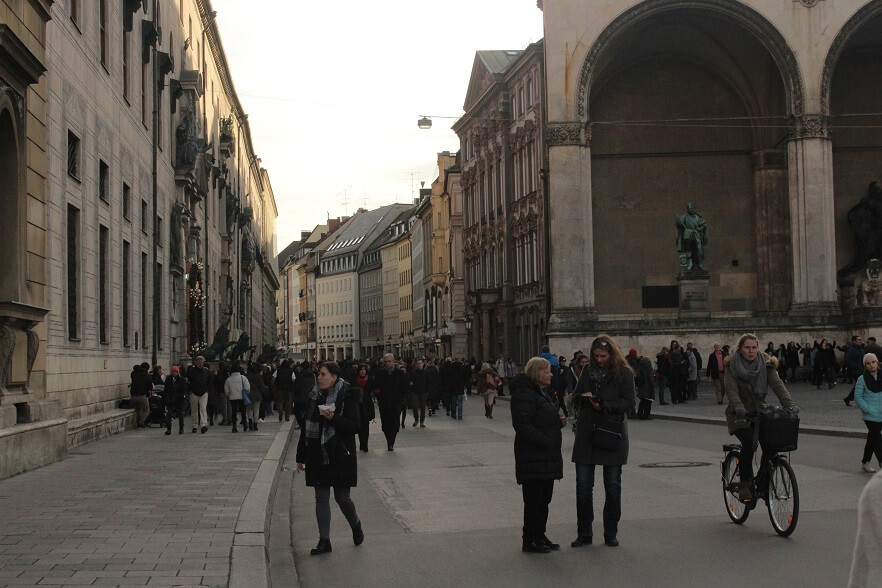
The square is the place where Hitler first tried to seize power over Germany. This event became known as the Beer Hall Putsch.
Munich Residenz Castle
The Munich Residenz was home to dukes, emperors, princes and Bavarian kings from the 14th-century until 1918. It’s the largest city palace in Germany. Now everyone can visit it, as it hosts a museum. You can wonder around ten impressive gardens and courtyards for free. Remember that museum tickets only cost 1 euro on Sundays. In the treasure room you can see the crown jewels of the Bavarian Kings. Don’t miss the Hall of Antiquities (Antiquarium), the Italian Renaissance Grotto Courtyard and the Baroque Ancestral Gallery.
The English Garden
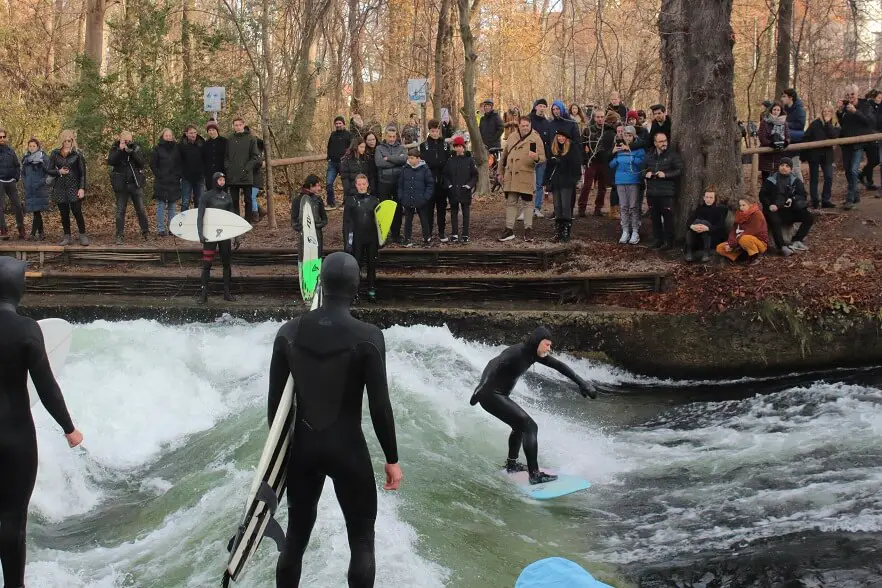
Not far from the Residenz there’s the favorite green spot of the residents, the English Garden. You’ll enter one of the largest green city spaces in the world just next to the famous river surfing hotspot. You can’t miss it. Crowds of people will be watching the sportsmen taking their chances on the small creek in the garden called Eisbachwelle. The wave is artificial, but it seems a lot of fun for the adventurous and experienced ones. They even have their own website. It was surprising to see surfers in a landlocked city, but nonetheless enjoyable.

As you continue your walk around the park, you’ll see locals having picnics, walking their dogs, enjoying biergartens or playing sports. Look for the Japanese tea-house added in 1972 for the Olympics and the Chinese Tower raised in 1790. In summer, there’s a beer garden that attracts not only tourists, but also locals.
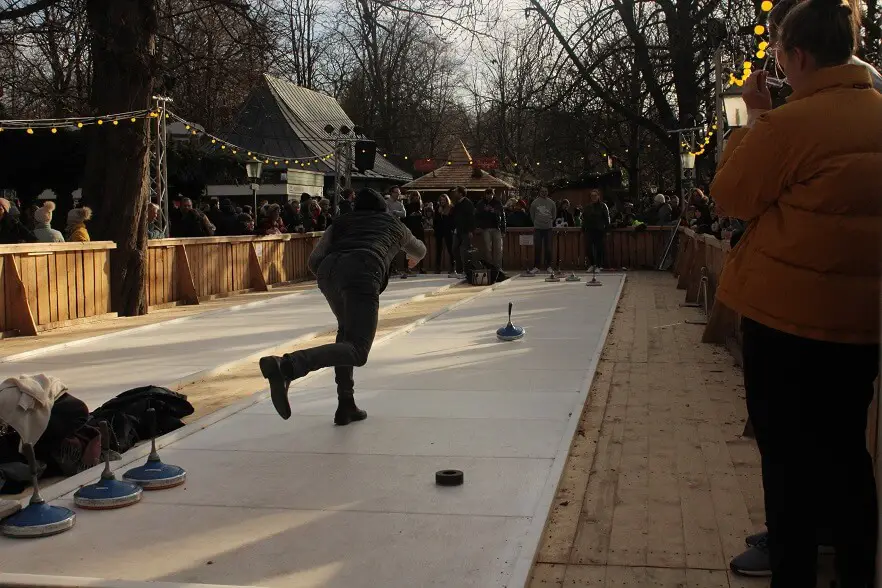
In winter, at the Christmas market next to the Chinese Tower, you can see locals and tourists playing traditional Bavarian curling on a small ice rink.
Hofbräuhaus
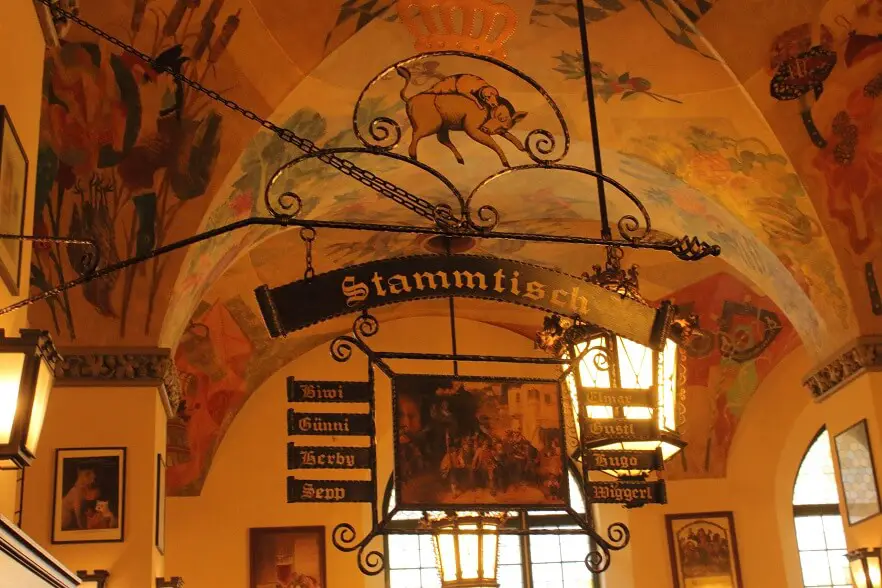
The number one attraction in Munich must be beer, taking into consideration Oktoberfest and the large amount of people it draws. Hofbräuhaus is the city’s most famous beer hall. Once upon a time it produced the beer of the Bavarian kings and still respects high-quality standards. Even if you don’t plan to eat (which locals advise against anyway), you should still visit the mother of all beer halls at least for a few minutes. You’ll find a lot of tourists there, but if you missed Oktoberfest, this is said to have the closest atmosphere to it all year round: large wooden tables, live folk songs, waiters in traditional costume etc.
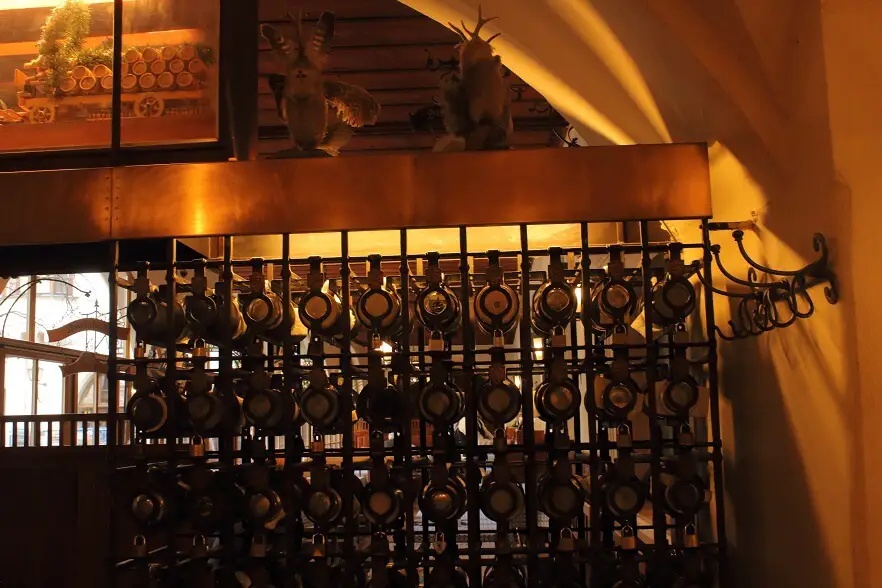
What I liked most about it was its Stammtisch culture. Only regulars can reserve such a table. They have their own beer mats and sometimes even their own beer mugs. These are safely put away in the tankard store after use. Read more about the importance of a stammtisch in this article.
Tip! At the state-run beer hall Oktoberfest rules apply: no service without a seat. Sit at a table and don’t be shy in sharing the space with others.
On the second day, you can choose one or two places a little farther from the city center:
Bavaria Statue
Bavaria Statue is Munich’s answer to New York’s Statue of Liberty. The 18.5-metre-tall bronze statue commissioned in 1850 by King Ludwig I personifies Bavaria. Inside it there’s a spiral staircase that one can actually climb. At the top, the Oktoberfest ground and down town are visible through four slits in the helmet.
BMW World
If you are a BMW fan, you’ll be happy to find out about BMW Welt. It’s a mixture between a car showroom and a museum. You can see anything from vintage cars and motorcycles to aircrafts. Even the BMW of Elvis Presley can be seen there. BMW Welt is free to enter. If you have more time, I also suggest the Audi factory in Ingolstadt, where you can see how a car is produced.
Nymphenburg Palace
The Nymphenburg Palace in the west of Munich was built in 1664 as a summer residence for the former rulers of the House of Wittelsbach. It was a love letter from prince-electoral Ferdinand Maria to Henriette Adelaide of Savoy after the birth of their heir, Maximilian II Emanuel.
Tips & tricks for your trip to Munich
- Dine in a beer hall and try the house beer and the hearty Bavarian classic, port knuckles.
- Munich has more or less 100 interesting museums. On Sunday the entry fee is just one euro for each of them (excluding special exhibitions).
- On Sundays, like everywhere in Bavaria, everything is closed except beerhalls, museums and Christmas markets (if you’re visiting in the season).
- You can take dozens of day trips from Munich to the Alpine peaks, medieval little towns and more fairytale castles. There’s even a Bavaria train ticket to help you spare some money.
- Oktoberfest takes place every year on Theresienwiese at the end of September for two weeks. Millions of tourists visit the city at that time. You should book your accommodation long time in advance and even consider staying out of the town.
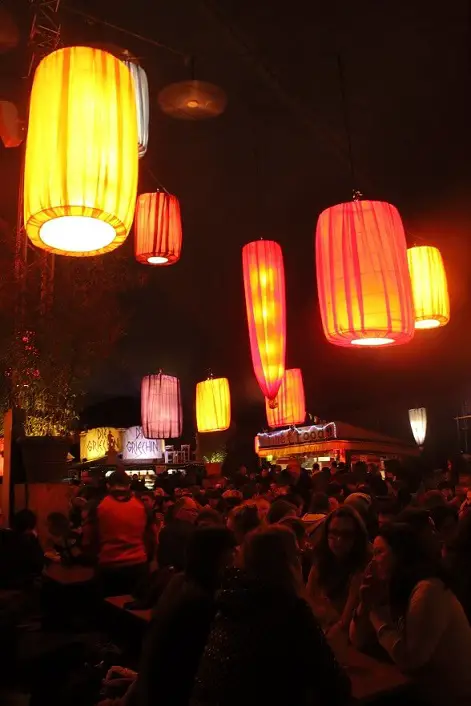
- The festival ground Theresienwiese hosts more wonderful events during the year, including Tollwood, in winter and summer.
Munich in December
One of the best times to visit Munich is in December, when half of the city is transformed into a huge Chrismas market. Millions of lights, the smell of mulled wine, grilles sausages and gingerbread will get even Grinch into the Christmas spirit.
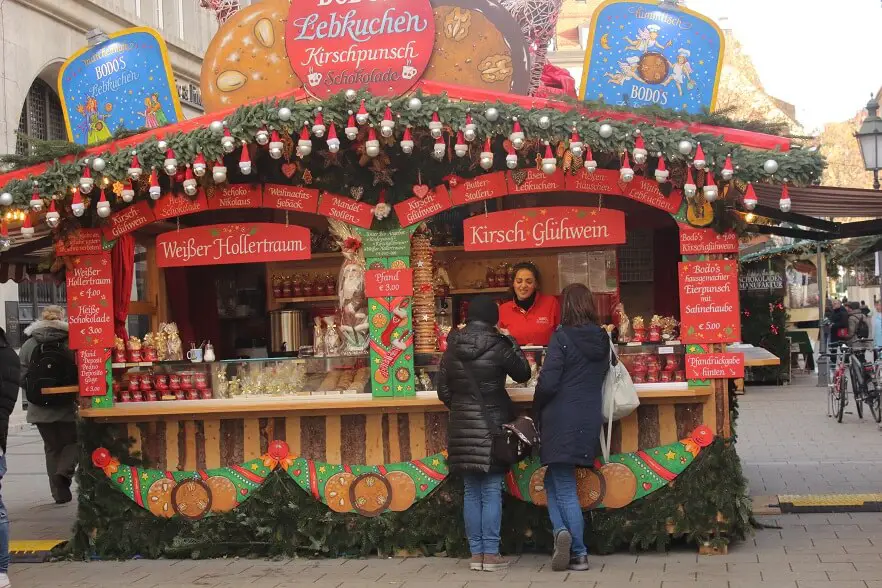
Some of the best Christmas markets in Munich are:
- the Christkindlmarkt in Marienplatz – the most crowded one by far
- the Christmas village inside a small courtyard of Munich Residenz
- the medieval Christmas market in Wittelsbacherplatz (Adventsspektakel & Mittelaltermarkt)
- the Christmas market at the Chinese Tower
- the Pink Christmas markt in the Glockenback quarter organized by the local LGBTQ community
- Tollwood on Theresienwiese
- Winterzauber in Viktualienmarkt
- Christmas tram from Sendlingertor
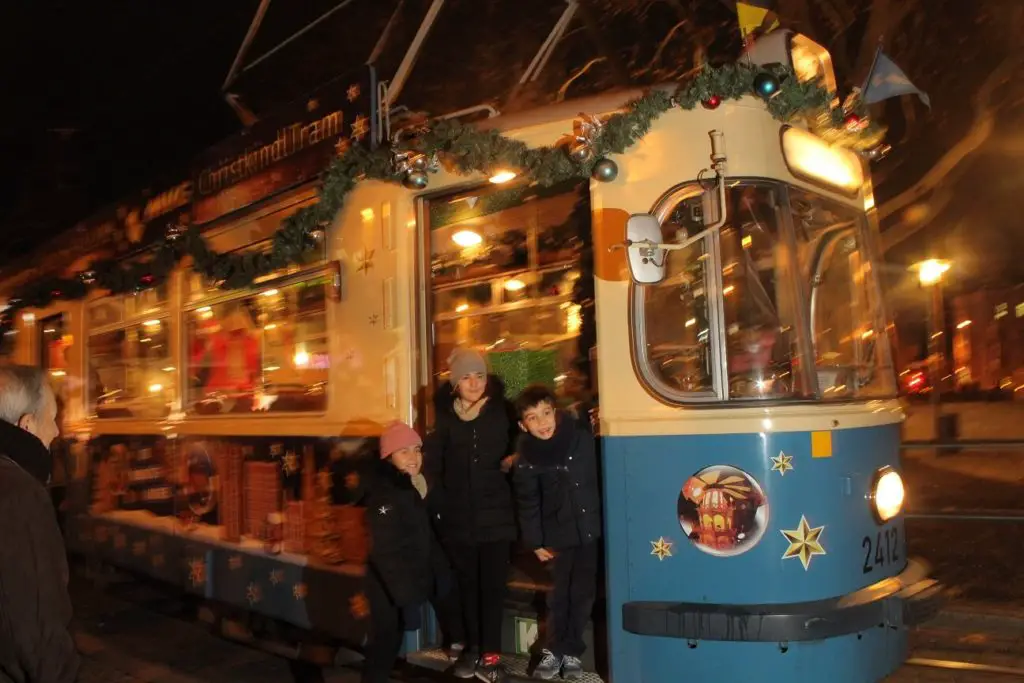
Given the number of tourist attractions and things to do in and around Munich, you should expect to spend at least a few days there. Check out some accommodation options on Airbnb.
What do you think? Would you visit Munich?
Pin the article to read it later!
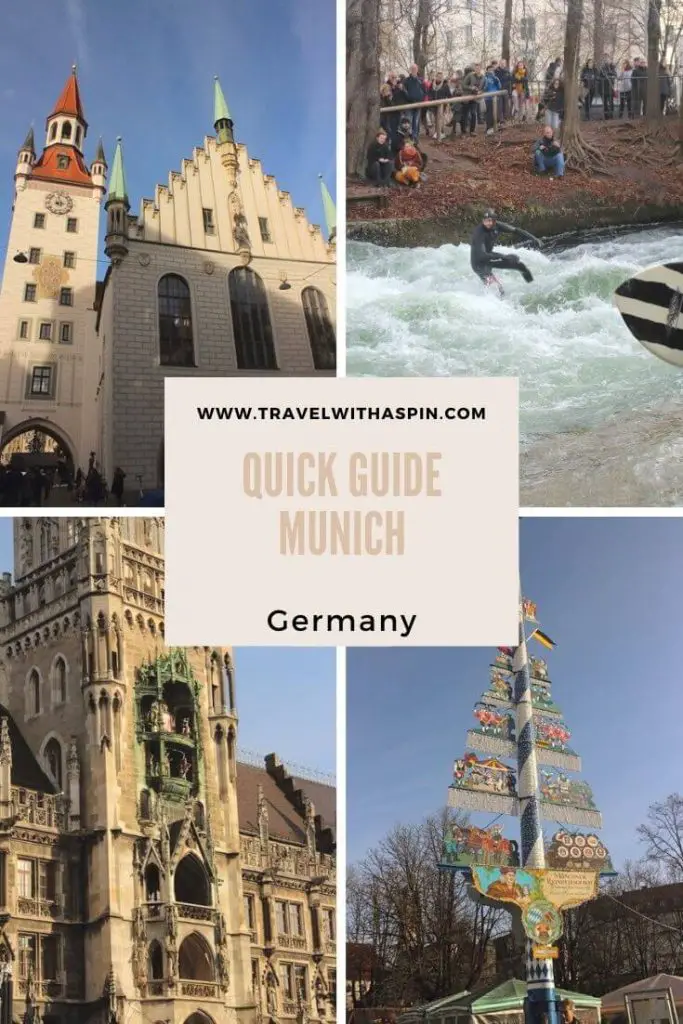
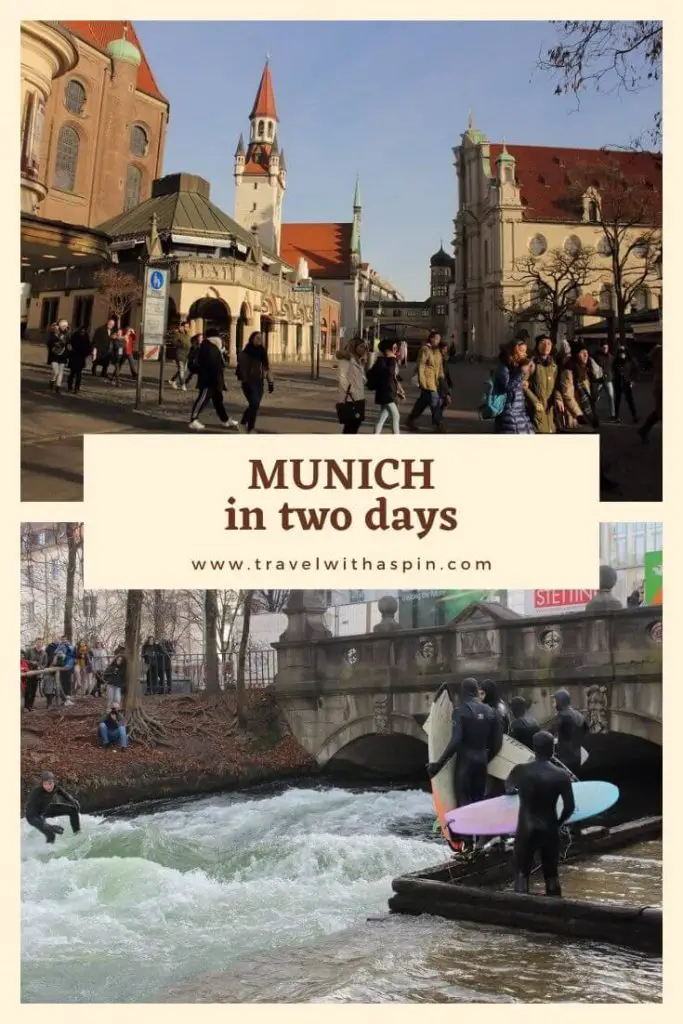
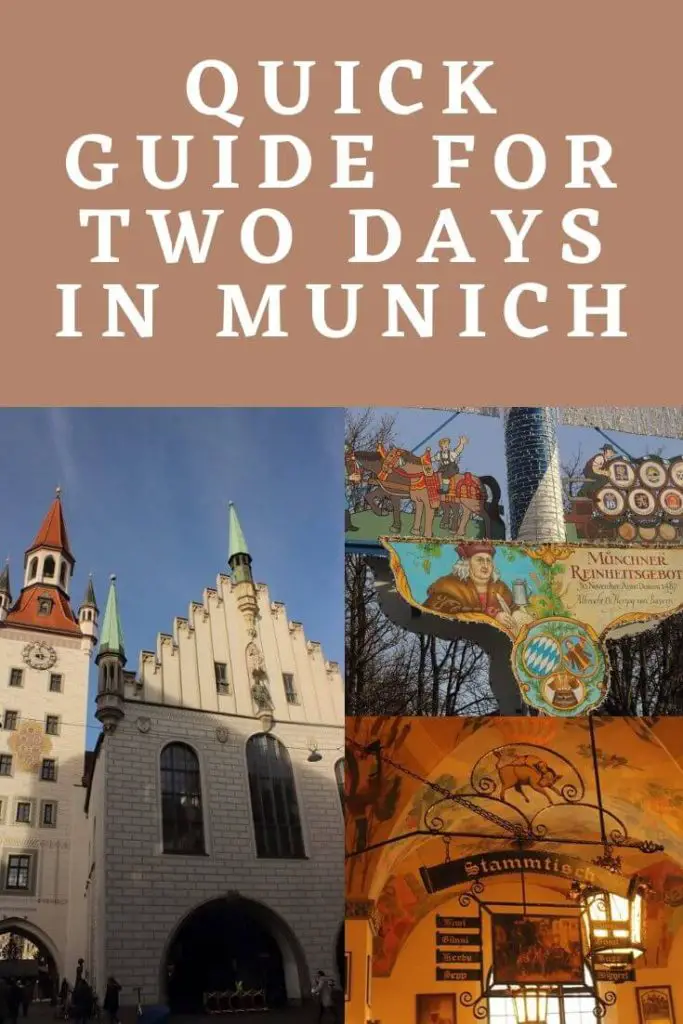
Travel With A Spin contains affiliate links. If you make a purchase through these links, I will earn a commission at no extra cost to you. Thanks for reading!
